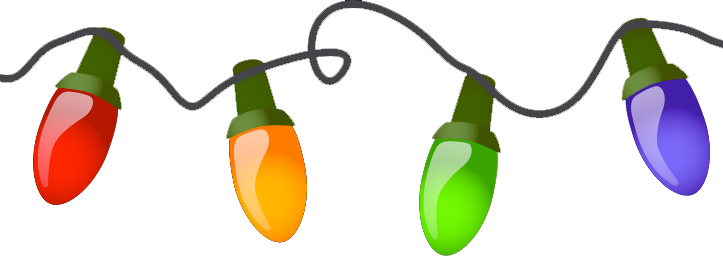A message from Cammy:
Poinsettias have gotten a bad rap, but there are other things that ARE toxic to furry four-legged family members. I found a box of chocolate-covered almonds a few years ago and after much anguish (for us all) and expense for my dad, I am still alive and well and happy to pass along this advice:
(Info below is courtesy of Washington State University College of Veterinary Medicine. This information is not meant to be a substitute for veterinary care. Always follow the instructions provided by your veterinarian.)
In all the activities of the season our beloved pets may be exposed to hazards less commonly found other times of the year. As homes fill with holiday spirit, pets may be intrigued by the new sites, smells and tastes. The following are some of the most common health concerns for your pet during the holidays. If you have specific questions regarding any pet health concern please contact your veterinarian.
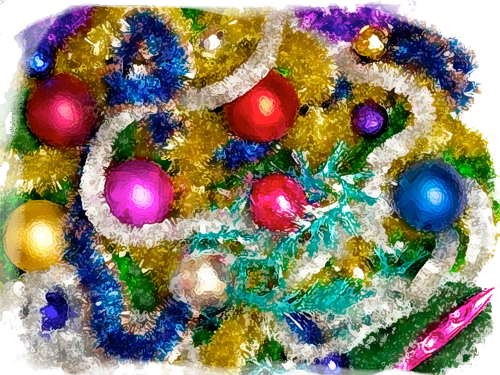 Tinsel, Ribbon and other Pretty Things
Tinsel, Ribbon and other Pretty Things
Ribbons, wrapping paper, ornaments, tinsel, extension cords and gifts may be appealing “chew toys” that may make your pet sick.
There is something about those shiny strands of Christmas tree decor, which drives kitties wild. Although the sight of your cat pawing at the tree may be cute, the ingestion of tinsel can be deadly. Eating tinsel or other string-like items such as ribbon (often called linear foreign bodies) can cause serious damage to the intestine. One end can get stuck while the rest is pulled into the intestine as it contracts; the contractions may cause the ribbon or tinsel to saw through the intestine. If not caught in time, infection of the belly cavity develops and the prognosis for recovery becomes poor. Pets with linear foreign bodies quickly become ill with signs including vomiting, diarrhea, depression, belly pain and sometimes fever.
Eating other holiday decorations can cause signs ranging from mild depression to severe vomiting or diarrhea, depending upon whether or not the foreign matter can be passed in the stool or gets stuck along the way. Foreign matter stuck in the intestine often does NOT show up on “x-ray” but sometimes the foreign matter will trap air in the intestine, which helps your veterinarian make a diagnosis. Surgery is required to remove foreign matter that does not pass out on its own.
![]() Holiday Lights
Holiday Lights
Decorative lights are another attraction for pets to chew on. Both indoor and outdoor lights should be carefully examined to ensure safety for your household pets. Electrical shock may occur from defective cords as well as from pets chewing on cords. Check cords for any signs of bite marks, loose or frayed wires, proximity to the tree’s water supply or evidence of short circuits. Use grounded “3-prong” extension cords and strictly follow manufacturer’s guidelines for light usage.
Electrical shock can cause burns, difficulty breathing, abnormal heart rhythm, loss of consciousness, and death. Call a veterinarian immediately if your pet has been injured by electrical shock. Treatment will be most effective if begun soon after the shock.
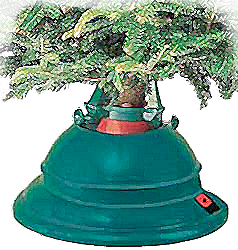 Water, Water…
Water, Water…
Even though they have their own water bowel, there is something enticing about a novel source of water; whether it’s the toilet bowl or the Christmas tree stand. If you add chemicals to the water meant to keep your tree fresh longer, be sure to read the label to make sure it is safe for pets.
Potpourri makes your house smell festive but may be another attraction for pets to drink. Make sure that potpourri pots are covered or otherwise inaccessible to pets.
It may be difficult to curb your pet’s fascination with all those pretty decorations. Child gates can be used across doorways to keep your pet away from the Christmas tree and decorations at times they cannot be watched.
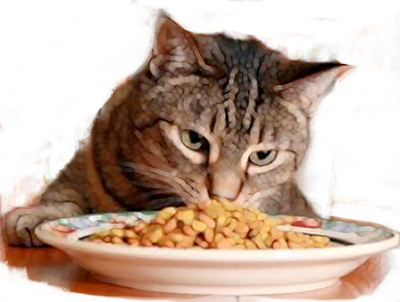 Overindulgence
Overindulgence
Well-intentioned family and friends may share holiday foods with pets causing the pet to develop a stomach upset or worse, pancreatitis (inflammation of the pancreas) which can be caused by eating fatty foods. To control excessive food intake by your pets and meet your guests’ desires to feed the pets, dole out the treats your pets would normally receive and let your guests “treat” the pets. If you want to get festive, mix some of your pet’s regular food with water to make a “dough” and roll out and cut into festive shapes, then bake until crunchy.
Extra attention from visiting relatives and friends may be relished by some pets while others seek solitude in their favorite hiding spot. Make sure pets are given some “personal space” if they want to get away from the commotion.
Some pets may respond to all the hullabaloo with a change in behavior including bad behaviors like eliminating in the house. Try to spend a little extra “quality time” with your pet to assure them they have not been forgotten.
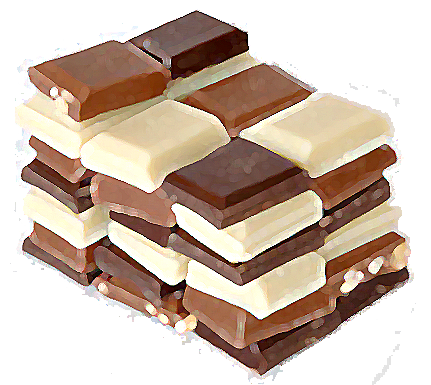 Chocolate
Chocolate
What would the holidays be without boxes of chocolate and warm cocoa in front of the fire? However, chocolate can be toxic or even fatal to dogs and cats. Chocolate may be mistakenly given to pets as treats and may be irresistible to the curious canine. Chocolate poisoning occurs most frequently in dogs but other species are also susceptible. Theobromine is the toxic compound found in chocolate. Signs which may appear within 1 to 4 hours of eating chocolate include:
- Vomiting
- Increased thirst
- Diarrhea
- Weakness
- Difficulty keeping balance
- Hyperexcitability
- Muscle spasms, seizures, coma
- Death from abnormal heart rhythm
The toxicity of chocolate depends on the amount and type of chocolate ingested:
| Source | Potential Toxic Dose (44lb dog) |
| Unsweetened Cocoa | 3oz |
| Baking Chocolate | 5oz |
| Semisweet Chocolate | 7oz |
| Milk Chocolate | 20oz |
The amount of theobromine in white chocolate or chocolate flavored dog treats is usually negligible. As with any poisoning, call your veterinarian or an emergency veterinary hospital immediately if you suspect your pet may have ingested chocolate. Have the product label information available when you call your veterinarian. There are national and regional poison control hotlines for animals. In general, the treatment of poisonings is most effective if begun soon after eating the poison, before large amounts are absorbed into the blood.
Calculator provided by www.AskAVetQuestion.com.
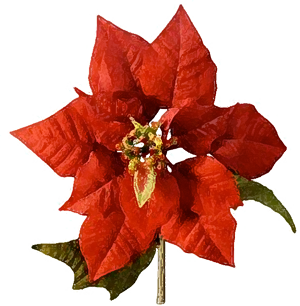 Poinsettias & Mistletoe
Poinsettias & Mistletoe
Poinsettias fill homes with color during the holidays. Poinsettias have received bad publicity in the past whereas in fact, poinsettias are not very toxic to pets. They do contain a milky sap that can irritate the mouth but if signs develop they are usually mild.
Mistletoe can be very toxic to animals and you should seek veterinary consultation immediately if your pet has potentially ingested any part of the plant. Mistletoe can cause vomiting, severe diarrhea, difficult breathing, shock and death within hours of ingestion.
There are many species of Holly (genus Ilex) Berries and leaves can be a problem although signs of poisonings are generally mild, and include vomiting, belly pain, and diarrhea.
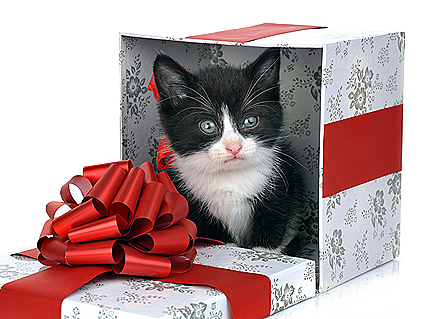 Pets as Gifts
Pets as Gifts
A cute, cuddly puppy or kitten may seem to be the perfect gift but unfortunately after the holiday season the population of animal shelters explodes with these “surprise gifts.” Owning a pet is a long-term commitment that not every one can make.
. . . . . . . . . . .
Other Holiday & Seasonal Tips:
Prevention of Antifreeze Poisoning
This Pet Health Topic was written by Paul Chauvin, Washington State University, Class of 2004.
Washington State University assumes no liability for injury to you or your pet incurred by following these descriptions or procedures.
| Did you find this information useful? Please consider helping us train the veterinarians of tomorrow by making a gift to the college.The Pet Health Topics Web site is a free service provided by the College of Veterinary Medicine at Washington State University. Your donation will help support veterinary education and research. |

